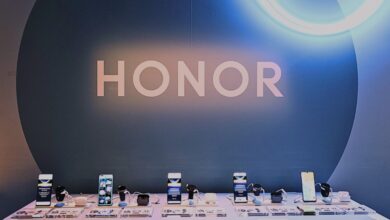
Meta Plans Premium MR Headset to Challenge Apple’s Vision Pro
According to a report by The Verge, Meta, the U.S based technology company, is gearing up to develop an enhanced version of its Meta Quest mixed-reality (MR) headset. This strategic initiative is aimed at challenging Apple’s Vision Pro headset and is slated for launch in 2027 as Meta’s flagship MR headset. Alongside this upcoming release, Meta is concurrently working on the next generation of Meta Quest headsets, expected to hit the market in 2026.
The forthcoming Meta MR headset lineup, potentially named Meta Quest 4, will feature two models internally dubbed “Pismo Low” and “Pismo High”. Scheduled for a 2026 debut, these models represent Meta’s commitment to expanding its MR product offerings. Additionally, Meta is also developing another premium model codenamed “La Jolla”, positioned to directly compete with Apple’s Vision Pro headset. Meta’s anticipated competitor to the Vision Pro is anticipated to debut in 2027, solidifying Meta’s presence in the competitive MR headset market.
Beyond their MR headset endeavors, Meta is reportedly venturing into augmented reality (AR) glasses equipped with physical displays. However, the development process has encountered challenges, with reports indicating that the AR glasses are significantly heavier than Meta’s current Ray-Ban smart glasses. Allegedly, Essilor Luxottica, Ray-Ban’s parent company, has declined collaboration due to concerns regarding the device’s comfort. If these reports hold true, Meta’s upcoming generation of AR glasses may not carry the Ray-Ban branding as originally intended.
Meanwhile, Bloomberg recently reported that Apple is also progressing with a new mixed-reality headset project aimed at offering a more affordable alternative. This accessory is designed to complement Mac computers and iPhones, spearheaded by Apple’s Vision Product Group. The focus lies in creating a cost-effective version of their premium Vision Pro headset.
To achieve a lower price point, Apple plans to streamline production costs by potentially omitting features such as the external EyeSight display and reducing the display resolution of internal screens. This strategic approach aims to broaden accessibility to Apple’s mixed-reality products across a wider audience.
In summary, Meta’s strategic initiatives with its Meta MR headset series underscore its commitment to innovation and competition in the MR and AR markets. As both Meta and Apple continue to advance their respective MR and AR technologies, their upcoming releases are poised to redefine user experiences and expectations in augmented and mixed reality.






